
![]()
Search the Journey to Forever website – click HERE
|
Journey to Forever: Make a donation |
En español
Biocombustibles, biodiesel
Navigation
Contact usTo Keith Addison Handmade Projects |
Glycerine
Glycerine (glycerin, glycerol) is the main by-product of making biodiesel. The name comes from the Greek word glykys meaning sweet. It is a colourless, odourless, viscous, nontoxic liquid with a very sweet taste and has literally thousands of uses. That is, pure glycerine has thousands of uses -- the biodiesel by-product is crude (and it's not colourless, and it's not only glycerine).
We thought of mixing the by-product with sawdust to make briquettes, and in a message to the Biofuel mailing list Tony Clark suggested using milk cartons instead of making briquettes, which need to be pressed: "By mixing this with sawdust to make a dry paste, and filling used milk cartons with this mixture, the use of timber for fuel can be significantly reduced. A 1-litre milk carton (about 1 quart US) of this mixture will give off more heat than twice or three times that weight in firewood." Using the by-product in a burner to pre-heat the vegetable oil for biodiesel processing would be an elegant solution, if it worked well enough. A visitor to our website told us this: "I work at a wastewater treatment plant and I was doing a search on glycerin and biofuels and came across your website. It has good information, thanks. The biogas is used as fuel in diesel engines which power electricity generators. But this wasn't raw by-product, it was separated glycerin from a commercial producer: "The glycerine is agricultural grade and looks similar to thin maple syrup. Can the unseparated by-product, the whole glycerin-catalyst-soap cocktail, also be used to increase biogas production? "Very good news to make the gas and liquid biofuel in an integrated way. You can compost excess glycerine by-product -- it is non-toxic and biodegrades quickly. "It has been concluded that sodium makes potassium available [to plants], that it tends to conserve soil calcium, magnesium and potassium. It can assist in plant nutrition when soil potassium is not suffiicient for the requirements of the crop." -- Charles Walters Jr., C.J. Fenzau, "An Acres U.S.A. Primer" Sodium and potassium are cation elements. In a healthy soil with ideal conditions for plant growth, the proportions of the cation elements are: calcium 60 to 70%, magnesium 10 to 15%, potassium 2 to 5%, sodium 0.5 to 3%, hydrogen 10 to 15%, and other elements 2 to 4%. Composting glycerine might not only be an environmentally sound way to eliminate the coproduct, but it may actually speed up decomposition of the materials in the pile. I diluted crude glycerine (2 water : 1 glycerine) split from the glycerine cocktail. I added some of the potassium phosphate that precipitates out and some ammonia to raise pH a bit. This was added to my compost as it was being built. After 48 hrs the temp of the pile was 160F (71C). This is considerably higher than temps I normally achieve. Upon turning the pile the second time I divided the large pile into 2 smaller piles.To one I added the solution as I built it, to the other I added water, only. After approximately 36 hrs the pile with the solution added was 150F, the one with only water was 125 F. This , I think, corroborates what the earlier results suggest: The glycerine and minerals split from the cocktail can not only be composted safely, they seem to stimulate the process. See also: What sinks to the bottom of the biodiesel processor during the settling stage is a mixture of glycerine, methanol, soaps and the lye catalyst. Most of the excess methanol and most of the catalyst remains in this layer. Once separated from the biodiesel, adding phosphoric acid to the glycerine layer precipitates the catalyst out and also converts the soaps back to free fatty acids (FFAs), which float on top. You're left with a light-colored precipitate on the bottom, glycerine/methanol/water in the middle, and FFA on top. The glycerine will be approx. 95% pure, a much more attractive product to sell to refiners. Here's how to do it: Separating glycerine/FFAs Biodiesel can be made with ethanol (which you can make yourself), instead of methanol (which is toxic, fossil-fuel derived, and you can't make it yourself). Here's a recipe: Optimization of a Batch Type Ethyl Ester Process. But the ethanol has to be anhydrous -- free of water -- which can't be achieved by distillation. One way to dry it is to use the by-product of making biodiesel -- glycerine. Here's how: The crude glycerine by-product from homemade biodiesel makes a powerful degreaser. So, you want to make soap? -- 3,400-word online article by Elaine White, author of "Soap Recipes: Seventy tried-and-true ways to make modern soap with herbs, beeswax and vegetable oils". Covers locating lye and safety precautions; equipment list; ten-step procedure; herbal soap; superfatting soap; soap recipes. For 85% KOH use 165% of the NaOH amount (x 1.65). Toiletries mailing list -- Large email discussion group for soapmakers, good reference library, ongoing co-ops for essential oils, bulk items, etc. If you use too much lye when trying to make biodiesel it won't separate into biodiesel and glycerine but turn instead into a sort of gloppy jelly, maybe with some soap solidified at the bottom. You can turn it into soap. Don't do this with an open flame gas stove! Or both. From Tony Clark to the Biofuel mailing list: "I disposed of the paint / biodiesel / glycerin / wash water in the compost." The most earth-shattering use of glycerine remains that discovered by Italian chemist Ascanio Sobrero 150 years ago when he subjected it to nitration to make the world's first real high-explosive, nitroglycerin, one of the most dangerous substances ever concocted. "In one of the more curious coincidences of science, the first modern high explosive -- nitroglycerin -- also became one of the very first man-made drugs. To this day, it remains the most commonplace treatment for chronic angina, the chest pain of heart disease," writes cardiologist Esmond A. Barker, MD, in "Nitroglycerin is most frequent medication for chronic heart pain". Nitroglycerin's action as an effective vasodilator led in 1998 to the release of RESTORE, the "first ever fully tested, effective topical cream for the safe treatment of male erectile dysfunction (impotence)". Glycerine is an alcohol (glycerol) and is used as a preservative in the food industry, as well as a sweetener: it is very sweet, yet it contains no sugar. This makes it an ideal sweetener for patients who cannot take sugar, such as the increasing number of Candida sufferers. Vegetable glycerine is said to be the "only acceptable sweetener" for Candida patients. Here are a couple of healthy recipes. 1/4 cup water Preheat oven to 175C. Place sweet potatoes in a greased 8-inch casserole. Put all other ingredients into a small bowl: mix. Pour mixture over sweet potatoes and bake 35 minutes, or until fork-tender. 3 eggs Beat eggs and milk together in large saucepan on low heat. Stir constantly until thickened -- mixture should smoothly coat a spoon. Takes 5-10 minutes. Cool. Add glycerin, cream (or soy or almond milk), vanilla, salt, and pecans. Refrigerate overnight or longer. Process in icecream maker (or freeze). Add carob flour to make a chocolate version. Health supplement for sportsmen -- Glycerine increases blood volume, enhances temperature regulation and improves exercise performance in the heat, or so it is claimed. It helps "hyperhydrate" the body by increasing blood volume levels and helping to delay dehydration. Following glycerol consumption, heart rate and body core temperature are lower during exercise in the heat, suggesting an ergogenic (performance enhancing) effect. In long duration activities, a larger supply of stored water may lead to a delay in dehydration and exhaustion. However, read the safety provisos. This won't work with flowers. For foliage, cut sprigs or leaves, wash off any dust and dirt. Cut away the lower inch of the stem, and stand the specimen in a solution of two parts of water to one part of glycerine. Big, heavy leaves might do better in a 50-50 solution. Copying Pad for Taking Transfers of Writing.—White gelatine 4 ounces, water 8 ounces, glycerine 8 ounces, gum dextrine 2 ounces. Always use these same proportions for any amount. Melt the gelatine in the water at a gentle heat, add to it the glycerine, in which the gum dextrine has been thoroughly incorporated. Now stir all together, until thoroughly mixed, and then pour into pans of the desired size, to the depth of 1/2 inch. RECIPE FOR INK TO BE USED.—Violet analine 40 grains, gum arabic 12 grains, alcohol 1/4 ounce, water 1/2 ounce; dissolve the gum in the water and alcohol, then add the analine. Shake in a bottle from time to time, until the analine is dissolved. TO WORK THE COPYING PAD.—Write with the ink on any good paper, press the written surface on the pad, and allow it to remain two minutes; then take off and the writing will remain, from which impressions may be taken by laying on plain paper and smoothing with the hand. As soon as the last impression is taken, be sure and wash off with a wet sponge. Glycerine is also a source of lecithin (used in foods as a fat emulsifier, and a vital component of all cell membrances in the body) and of tocopherols (vitamin E). It is used in skin moisturizers, lotions, deodorants, makeup, toothpaste, sweets and cakes, pharmaceuticals and patent medicines, in paper manufacturing, printing ink, in textiles, plastics, and electronic components.
General

The only real "cake" of soap we've ever seen -- solidified glycerine from the bottom of our first-ever biodiesel.
Burning glycerine
Glycerine and biogas
Composting the by-product
Separating glycerine
Purifying glycerine
Soap
Glop soap
Paintbrush cleaner
High-explosives
Heart disease drug
Love potion
Safe sweetener
Health supplement
Preserving plants
Photocopying
Other uses
General
There is a market for the glycerine once you've separated it from the soaps and the lye that's also in the by-product (see Separating glycerine, below) and probably refined it too, neither of which is cheap, and then only if you can supply it by the tonne on a regular basis, unless you're lucky enough to find a small niche market.
But there are other things you can do with it other than sell it, read on.
Lots of information on glycerine, from a Japanese manufacturer (in English) -- Sakamoto Yakuhin Kogyo Co., Ltd.:
http://www.sy-kogyo.co.jp/english/sei/1_gly.html
Glycerin -- King's American Dispensatory, by Harvey Wickes Felter, M.D., and John Uri Lloyd, Phr. M., Ph. D., 1898
http://www.mail-archive.com/biofuel@sustainablelists.org/msg13553.htmlBurning glycerine
The glycerine by-product burns well, but unless it's properly combusted at high temperatures it will release toxic acrolein fumes, which mainly form at between 200 and 300 deg C (392-572 deg F).
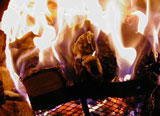
Three 1-litre milk-carton glycerine-sawdust "logs" are enough to heat our bath.
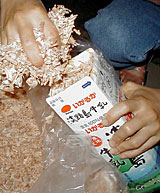
Filling a milk carton with wood shavings...
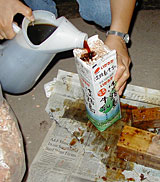
... adding the by-product, then tamp it down hard with a piece of 2x2 -- the soiled newspaper makes a good fire-starter.
We've used it to heat a wood-fired bath (see next, Sawdust "logs") and to pre-heat the vegetable oil for biodiesel processing (below, Burners).
Sawdust "logs"
We used wood shavings, not sawdust. A 1-litre milk carton holds 450 gm of wood-shavings and 750 gm of glycerine by-product. Used for heating the traditional Japanese iron-cauldron bath at our previous house, three milk cartons burned for about 45 minutes and heated 100 litres of water from room temperature to 60 deg C (140 deg F). In sub-zero C winter weather it took five cartons instead of three. We started the fire with wood to get the burning chamber to a high temperature before adding the milk-carton "logs". We heated the bath this way for more than a year.Burners
It's an elusive goal. Prof. Michael Allen thinks complete and clean combustion of the by-product requires a burning temperature in excess of 1,000 deg C (1,800 deg F) "and you will probably need a mean residence time in the "Hot Box" of about 5 seconds". And perhaps pre-heating and atomisation as well (spraying).
With the sort of low-tech burners backyard brewers have made so far, what happens instead is that the burner might burn for long enough to pre-heat the oil, but then it gets gunged up with sticky black stuff that won't burn (mostly soap) and it goes out. If you want more heat you have to clean it out and start it up again.
Another disadvantage is that it's not a clean burn, it smokes, especially towards the end of the burn when it's trying to combust the soap.
We've used a Turk burner for pre-heating. It works, but we prefer using our kerosene pressure stove, which burns pure biodiesel.
We doubt any Turk-type burner will overcome these combustion problems, we haven't heard of anyone successfully using a Babington-type burner with biodiesel by-product either.
We've found that Mother Earth News waste oil heaters also won't burn the by-product for long before coking up. We'd hoped a modified version using a forced air-supply, which burns much hotter, would solve the problem, but it didn't.
Instead we developed a cheap and simple bioheating oil to use with heaters and burners. See Journey to Forever's forced-air biofuel heater. We're adapting this method for pre-heating WVO for biodiesel processing, etc.
Both the bioheating oil and biodiesel work well in Turk burners, and so does the separated FFA from the by-product (see next, Separating the glycerine).
More interesting than trying to burn the glycerine by-product efficiently is the prospect of using it as part-feedstock for a methane digester to produce biogas, a clean-burning and efficient cooking gas which can be used for heating in the biodiesel process. See next, Glycerine and biogas. Glycerine and biogas
"Here's another use of glycerin: Our treatment is accepting the glycerin from a biofuel producer, we feed it to our digesters, slowly very slowly. The addition of glycerin has dramatically increased our gas production, so that we run all three engines that produce electricity for our plant and occasionally need to flare off the excess methane (we have four flares).
"This might be of interest to your readers who use digestion for electricity."
"As for pH, since the chemistry in the anaerobic digester is healthy, a high pH wasn't much of a concern. Our main concern was foaming with the introduction of glycerin, and we did see an increase hence the slow feed rate to the digester."
Biofuel mailing list member, researcher Prof. Pagandai Pannirselvam in Brazil, said:
"There are many published papers about the enhanced production of biogas from oily wastes and glycerine is a good intermediate metabolite, hence the results agree with theory.
"But here too we need a mixed microbial population to work well and they will need a lot of adoption time for glycerine, otherwise one may totally fail to produce gas.
"There are two routes to get energy from waste of the BioDiesel making process, bioconversion and thermo-conversion. I believe the combined Biogas generation is better than combustion. The correct mixture of proteins and glycerine and salt needs to be carefully solved by practical work."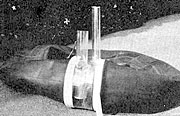 We'll be constructing biogas digesters here in Tamba, perhaps starting with this one: "Methane Digesters for Fuel Gas and Fertilizer, With Complete Instructions For Two Working Models", by L. John Fry, Chapter 10: Building an Inner Tube Digester.
We'll be constructing biogas digesters here in Tamba, perhaps starting with this one: "Methane Digesters for Fuel Gas and Fertilizer, With Complete Instructions For Two Working Models", by L. John Fry, Chapter 10: Building an Inner Tube Digester.
We'll investigate glycerine by-product digestion. We've been wanting to do this since 2001 -- see Appropriate transport (though not quite this way).
Some home-brewers have pointed out that wastewater treatment systems should be able to handle the glycerin by-product without problems. It mixes with water, it's biodegradable, and if you reclaim the excess methanol first, it's non-toxic. As for the lye and the soap, lye is a drain-cleaner after all, and wastewater plants are no strangers to soap. Even the methanol might be an advantage, some of the digester bacteria like it.
But it's best not to pour by-product down the drain or the toilet without checking with your local authority first.
The raw by-product can also be composted, and the separated glycerin (see below) can be used to help heat up a compost pile. See next, Composting.Composting the by-product
It will need to be mixed thoroughly with other materials so that the air and bacteria can get at it, or it will just make a sticky mass -- mix thoroughly with dry, "brown" materials, use in conjunction with other composting materials as only a part of the overall mix.
Composting should be "hot" compost -- aerobic, thermophilic compost that reaches high temperatures. See Journey to Forever's Composting pages.
When separated from the soaps and catalyst in the by-product "cocktail", glycerin helps to heat up a compost pile, see below, Compost activator
NaOH or KOH?
"What to do with Glycerin… Compost? -- but probably not if NaOH, only KOH", says a US biodiesel website, and provides the link to this webpage.
Not so. You can safely compost the by-product of biodiesel made with either NaOH (sodium hydroxide) or KOH (potassium hydroxide), as well as of biodiesel made with the acid-base method, which leaves some sulphates in the by-product mixture (sulphur is a "macro-nutrient", essential for plant growth, all soils contain sulphur).
Potassium is sold as a chemical fertiliser, and sodium isn't used as a fertiliser, so some people jump to the conclusion that sodium will harm the soil and the plant life. In fact both sodium and potassium are a part of healthy soil, and on the other hand both of them can harm the soil if used in excess. Composting greatly reduces that risk.
You can add sodium up to the level of 3% with no harm. The upper limit for potassium is only 2% higher anyway.
Too much sodium and/or potassium will unbalance the soil both physically (packed soil, poor drainage) and biologically (less biological activity overall, higher proportion of pathogens).
Adding minerals direct to the soil can be an imprecise and hazardous game. Composting widens the margins for error considerably, resulting in higher organic-matter (humus) levels which help to "buffer" the soil, along with increased quantities of all the cation elements. When it's been composted first, the soil can absorb reasonable amounts of sodium or potassium without harm.
If you try to use too much by-product in the compost mix it won't compost, you'll have re-mix it with more dry brown stuff. If it composts well, it will be safe to use.
If you want to recycle your glycerin by-product this way learn to make good compost.
Compost activator
More about composting the glycerin by-product -- separated glycerin speeds up the composting process:
-- "Crude Glycerin and Hot Compost", Tom Kelly, Biofuel mailing list, 30 May 2006, http://snipurl.com/rq1z
http://snipurl.com/rq20
Re: [Biofuel] more goofy questions [composting the glycerine cocktail]
31 May 2006
Don't try to feed glycerine by-product to manure worms (see Vermicomposting), it will kill them unless it's been pre-composted.Separating the glycerine
A commonly asked question: How much glycerine do you get? A better question would be: How much of the "glycerine layer" is actually glycerine? The rule of thumb is 79 milliliters of glycerine per liter of oil used -- 7.9%. In fact there's usually more soap -- the "glycerine" layer is more of a "soap" layer than anything else. Unless you use Aleks Kac's "Foolproof" acid-base two-stage process, that is -- see this photograph and the caption for an idea of how much less soap you'll make. Purifying glycerine
Absolute Alcohol Using Glycerine -- Mariller-Granger Processes, from E. Boullanger: Distillerie Agricole et Industrielle (Paris: Ballire, 1924). Mariller's absolute alcohol production process by dehydration using glycerine, various systems examined and explained. Translation from the French by F. Marc de Piolenc.
But -- the glycerine has to be 99%+ pure. Purifying it is no simple matter -- it's difficult to distill it because glycerine has a very high boiling point (290 deg C). Solvent purification distillers will purify the glycerine, but they are expensive.Soap
Remove the residual methanol first.
Letting the by-product stand in an open container for a few weeks will NOT evaporate the methanol as it's often said it will, or not much anyway.
Boil it off -- NOT over an open flame, do it in the open, don't inhale any fumes, or (better) use a simple condenser to recover the methanol for re-use.
The disadvantage of raw by-product is that it contains most of the lye catalyst used in the processing, which makes it very caustic, it can burn the skin if you don't use gloves.
Saponifying the by-product makes an even better cleaner, and it's not caustic so it won't burn your skin -- in fact it's kind to the skin because of the high glycerine content. Glycerine moisturizes the skin and it's a natural product of the soapmaking process, but commercial soap manufacturers remove the glycerine for use in lotions and creams, which are more profitable. Handcrafted soap retains the glycerine, and hence the boom in do-it-yourself craft soapmaking, and the high prices of handmade soaps.
Saponified glycerine by-product is a great cleaner, we use it for all cleaning jobs, whether to clean old machine parts filthy with dirt and grease, or as an effective and economical dishwasher, laundry soap, or an excellent hand-cleaner. It cuts through oil, grease and dirt like a knife, and it doesn't take much of it.
There are various recipes for making by-product "soap", but they're rather vague and imprecise. Basically, remove the methanol first, then mix extra lye with water, add it to the heated by-product and mix for 10 or 15 minutes while maintaining the temperature. Then you have to let it cure for a couple of weeks.
The difficulty with by-product soap is in calculating how much extra lye to use. It depends how much you used in the first place.
The results also depend on which catalyst you used: sodium hydroxide (NaOH) will give a solid bar soap, potassium hydroxide (KOH) makes liquid soap. We prefer KOH as a catalyst and seldom use NaOH, and we have no experience of making bar-soap from the by-product. We'd rather have a liquid cleaner anyway.
You have to stay with the catalyst you started with -- if you used NaOH in the biodiesel process you can't then use KOH to make soap from the by-product, it has to be NaOH, and vice versa: if you started with KOH, make soap with KOH.
We use 100 ml of water per litre of by-product, which works well with KOH to make liquid cleaner. That should be okay for NaOH bar soap too, or try using less water.
Always add the lye to the water, not the water to the lye, which can cause a dangerous reaction. Use a stainless steel saucepan (just rinse it afterwards, you can still use it for cooking). Mix it outside, avoid any fumes. It gets hot, and the lye dissolves in a few minutes.
Heat the by-product to 45-50 deg C (113-122 deg F). Add the lye water slowly while stirring the by-product, careful not to splash. Mix for 10 minutes or longer. We use a paint-stirrer powered by a hand-drill set to slow speed for mixing 10-litre batches in a 20-litre stainless steel pot.
Cover the pot, leaving some air-space so it can breathe, and cure for two weeks before use.
If the soap is too viscous, warm gently on a stove while stirring and add extra water when the temperature reaches about 45 deg C (113 deg F).
Finding the correct amount of lye to use is more difficult. It depends on the titration of the oil you used to make the biodiesel.
Common recommendations are that if you used say 5-7 grams of NaOH per litre of oil in the biodiesel process, then you need another 30 to 40 grams of NaOH to saponify the by-product.
We think it should be more precise than that -- we've found if you don't use enough lye the soap tends to leave an oily film, and if you use too much it's too harsh.
Here are some starting figures you could try, apply them proportionally according to the titration of your oil.
If your oil titrated at 1 ml 0.1% NaOH solution try using 22 grams of NaOH; if the titration was 2.5 ml 0.1% NaOH solution, try 30 grams of NaOH. Make a few tests first with small quantities, varying the amount of lye by 2 grams on either side until you get the best result.
For KOH, multiply by 1.52 for 92% pure KOH, by 1.56 for 90% pure KOH, or by 1.65 for 85% pure KOH.
If you separate the glycerine by-product from the impurities (see Separating glycerine/FFAs), you'll be left with about 80-90% pure glycerine. You can add it to plain liquid soap to make a high-glycerine shower-soap or shampoo. It doesn't need much -- try 10 to 20cc per 500cc of liquid soap, and add some essential oils for fragrance. First remove the excess methanol (which ends up in the glycerine after separation).
See Making lye from wood ashExcellent soap book
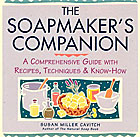 The Soapmaker's Companion: A Comprehensive Guide With Recipes, Techniques & Know-How, by Susan Miller Cavitch, Storey Books, 1997, ISBN: 0882669656
The Soapmaker's Companion: A Comprehensive Guide With Recipes, Techniques & Know-How, by Susan Miller Cavitch, Storey Books, 1997, ISBN: 0882669656
Great on soap and of much interest to all biodiesellers. One reviewer said: "This was the most complete book on soapmaking I've ever read. The first to actually explain the chemistry & give formulas to figure the ratios of lye to fat." Buy at Amazon.com:
The Soapmaker's CompanionWeb resources
http://members.aol.com/oelaineo/directions.html
How to make soap in a blender! by Elaine White -- "Blender Soap is the easiest and quickest way to make soap!" says Elaine White. But you should learn the basics first: "I suggest this method for experienced soapmakers only," she says.
http://members.aol.com/oelaineo/blender.html
The Amount of Lye Required to Make Soap by Elaine White -- Saponification, Lye/Fat chart
http://members.aol.com/oelaineo/sapchart.html
Online Lye Calculator at Majestic Mountain Sage helps soap makers calculate their soap formulations. Extensive soapmaking resources at this site.
http://www.thesage.com/calcs/lyecalc2.php
NOTE: The directions given at the above websites for using potassium hydroxide (KOH) instead of sodium lye (sodium hydroxide, NaOH) assume that the KOH is pure. Sodium hydroxide is usually 99% pure, but 99% pure KOH is rare, though it does exist. Most KOH is between 85% and 92% pure, and it's fine for making soap.
To calculate the lye amount needed for making soap with ordinary, less than pure KOH:
For 90% KOH use 155.83% of the NaOH amount (x 1.56).
For 92% KOH use 152.45% of the NaOH amount (x 1.52).The old way
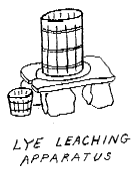 Colonial soap making, history and techniques -- 5,250-word online booklet by Marietta Ellis of the Soap Factory, who has researched soap making techniques and the history of soap making for over 30 years. She also works with VITA (Volunteers In Technical Assistance), providing people in developing countries with soap making information. Detailed instructions, some illustrations, bibliography.
Colonial soap making, history and techniques -- 5,250-word online booklet by Marietta Ellis of the Soap Factory, who has researched soap making techniques and the history of soap making for over 30 years. She also works with VITA (Volunteers In Technical Assistance), providing people in developing countries with soap making information. Detailed instructions, some illustrations, bibliography.
http://www.alcasoft.com/soapfact/history.html
Soap Making - Traditional Methods -- Prepared from information in many soap making books which describe old pioneering methods used up to the end of last century in America, Australia, Canada, and New Zealand, using substances which are easily found or made in most parts of the world, such as wood ash and rainwater. Many of these techniques are now being used in African countries. 6,700-word article by Paul Norman, with illustrations.
http://journeytoforever.org/bflpics/TraditionalSoapMaking.pdf
Soap -- King's American Dispensatory, by Harvey Wickes Felter, M.D., and John Uri Lloyd, Phr. M., Ph. D., 1898
http://www.henriettesherbal.com/eclectic/kings/sapo.htmlSoap forums
http://www.yahoogroups.com/community/1Toiletries
Soap & Candle Making -- Web forum for those making soap and candles to share ideas and techniques. Post, browse or search messages.
http://forums.thathomesite.com/forums/soap/
See: Natural vegetable soapGlop soap
In a nutshell:
Pour glop into pot, turn on medium heat, let residual methanol evaporate, don't breathe, pick a soap recipe, subtract caustic already in glop from weight required by recipe, mix this amount of caustic with the specified amount of water, pour into pan, stir to trace, pour into mold or other, wait two weeks, bathe either self or dog.
-- Todd Swearingen, Biofuels mailing listPaintbrush cleaner
"I have another use for the by-product from biodiesel production -- cleaning paint brushes which have been used with oil-based paints. I have found it to be superior to turps (turpentine), and have not had the brush harden from residual paint.
High-explosives
Sobrero's face was badly scarred in an explosion during an early experiment. He said nitroglycerin was so dangerous it was useless, and it had killed so many people he was ashamed to be its discoverer.
But Swedish chemist Alfred Nobel set about mass-producing the stuff, in spite of several explosions -- one of which killed his brother. Nobel discovered that nitroglycerin could be mixed with silica (diatomaceous earth) to form a stable high-explosive which he called dynamite. It made him one of the richest men of the age.

Alfred Nobel
Nitroglycerin is extremely powerful. A mere 10 ml will expand 10,000 times into 100 litres of gas at an explosive velocity of 7,700 metres per second (17,224 miles per hour) -- more powerful than TNT.
It's easy to find recipes for nitroglycerin. You mix deadly compounds like sulphuric acid and nitric acid with the glycerine and unless you can control the following runaway reaction it explodes in your face. Most formulas carry warnings like these:
"Caution: Nitroglycerin is extremely sensitive to decomposition, heating, dropping, or jarring, and may explode even if left undisturbed and cool."
"Caution: Nitroglycerin has the capacity to sense when a stupid or clumsy person is around and, if given a chance, it will try to kill him."
"Caution: This formula assumes that the maker has no qualms about killing his/her self in the process."
These cautions are very well-founded!
Every now and then newspapers rediscover these "resources" on the World Wide Web and set up a hue-and-cry for Internet censorship, claiming it promotes terrorism, but any terrorist worth his Semtex knows better than these amateurish offerings.
Anyway these things have been around much longer than the Internet. We found a nitroglycerin recipe in a general how-to book published more than a century ago, along with a dozen other explosives, including dynamite. Did Civilization-As-We-Know-It survive? It's a little hard to tell! (But we think it did.)
Heart disease drug
http://www.cardio.com/articles/nitrogly.htm
Nitroglycerin is a vasodilator -- it relaxes the blood vessels, reducing the pressure on the heart. There can be side-effects -- some patients get killer headaches, others low blood-pressure and dizziness -- and it can clash seriously with other drugs (see next). It comes in the form of tablets for under the tongue, ointment and skin patches -- and it cannot be turned into an explosive.
The dosages are low: the tablets contain a maximum of 0.6 mg nitroglycerin, the ointment is 2% nitroglycerin.
This may be because nitroglycerin isn't only a deadly explosive, it's also a deadly poison: the lethal dose is only 2 grams, but toxicity begins with a much smaller amount.Love potion
http://pharmacology.about.com/library/98news/bln0309a.htm
"Restore" contains 1% nitroglycerin and is "effective within minutes of application of achieving an erection of up to 45 minutes duration. No significant side effects or instances of priapism were reported."
Want to double the effect? Forget it: do NOT take Viagra (sildenafil) if you are taking any form of nitroglycerin, whether for heart pains or for heart pangs. The combination could kill you.
http://www.cnn.com/HEALTH/9805/21/viagra.warning/Safe sweetener
Sweet potato casserole
2 tablespoons 100% pure vegetable glycerin
2 teaspoon (alcohol free) orange flavouring
Ground cinnamon to taste
1/2 cup chopped or ground fresh walnuts
1/2 pound sweet potatoes, scrubbed, peeled and quartered
Vanilla Pecan Icecream
2 tablespoons softened butter (optional)
1/2 cup food-grade glycerine
2 cups (unsweetened) soy or almond milk
2 teaspoons vanilla
1/2 teaspoons sea salt (optional)
2 cups cream, or 2 extra cups of soy or almond milk to lower the fat content
1/2 cup pecans (roast lightly in oven and cool before using)Health supplement
http://www.supplementwatch.com/supatoz/
supplement.asp?supplementId=152
Preserving plants
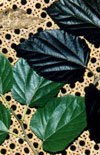
Mulberry leaves -- preserved (dark) and fresh-picked
The leaves might change color with absorbtion. Ready when the entire leaf has changed color, having absorbed as much liquid as possible. The process takes a week or two. If the leaves start to droop, they've been in the solution too long.
Take them out, wipe them off, tie a string round the stem and hang them upside down.

Six hours later the fresh leaves have wilted
Another way is to completely submerge the leaves in the solution (you'll have to weigh them down). This method works better with some leaves.
When ready, wipe any moisture off the leaves. Wipe off any moisture or "leakage" for the first few weeks. They're now permanently preserved.
Photocopying -- from long before the age of photocopiers
-- From "Lee's Priceless Recipes: 3000 secrets for the home, farm, laboratory, workshop and every department of human endeavor", Laird & Lee, Chicago, 1895 (facsim. Algrove, Ottawa, 1998). Other uses
Biofuels
En español -- Biocombustibles, biodiesel
Biofuels Library
Biofuels supplies and suppliers
Biodiesel
Make your own biodiesel
Mike Pelly's recipe
Two-stage biodiesel process
FOOLPROOF biodiesel process
Biodiesel processors
Biodiesel in Hong Kong
Nitrogen Oxide emissions
Glycerine
Biodiesel resources on the Web
Do diesels have a future?
Vegetable oil yields and characteristics
Washing
Biodiesel and your vehicle
Food or fuel?
Straight vegetable oil as diesel fuel
Ethanol
Ethanol resources on the Web
Is ethanol energy-efficient?